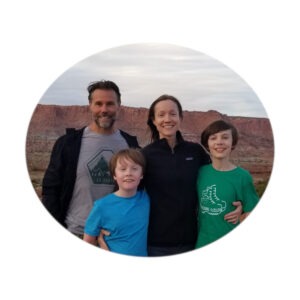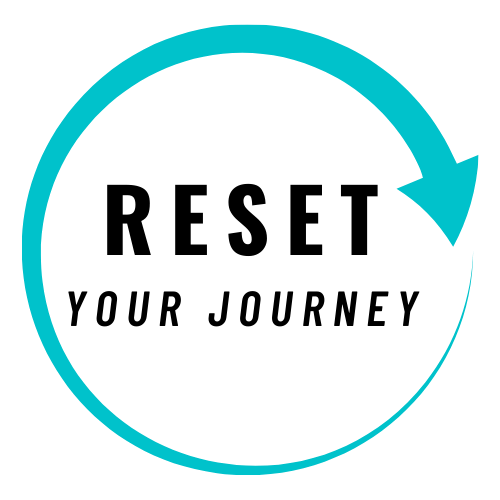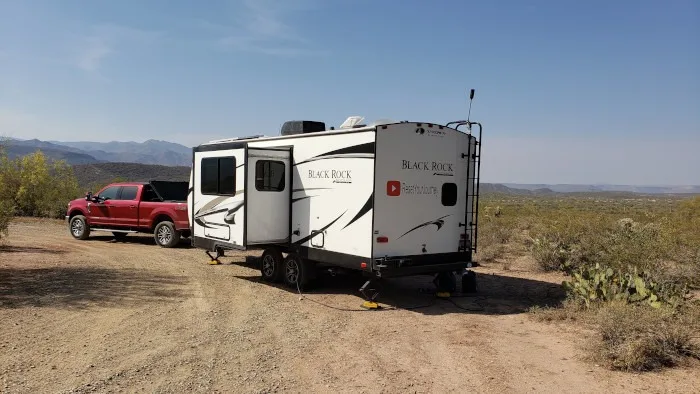Last Updated on 11/15/2023 by Glynn Willard
There’s a lot more to BLM land than meets the eye.
Activities for public use on BLM land include:
- Camping
- Hiking
- OHV use
- Mountain Biking/E-Biking
- Equidistant trails
- Climbing
- Hunting/Fishing
- Shooting
- Boating
And there’s no shortage of usable wilderness areas in the west to spend more time outside!
The Bureau of Land Management has a rich history and some cool programs for the public.
Let’s explore further.
Bureau Land Management Camping
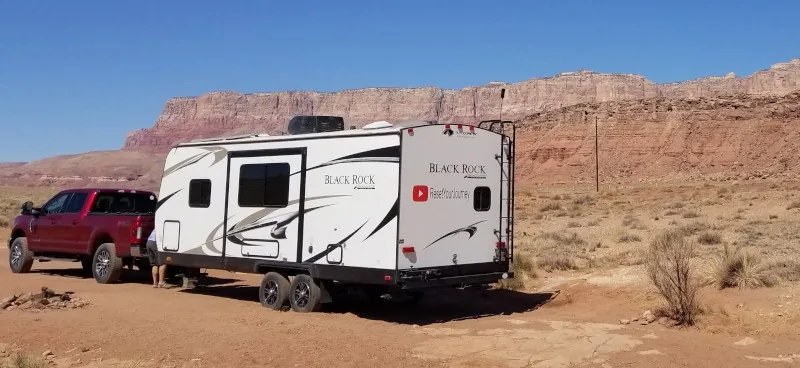
Yes, you can dry camp on BLM land and that’s our favorite use of public lands. If you’re a tent dweller, BLM land is also great for primitive camping.
But where and how long can you camp?
BLM land will clearly label land that you cannot use for camping with signage. And yes, we do come across such signs on occasion.
But if it’s not laid out as BLM campsites or not labeled, the general rule for dry camping (boondocking) is no more than 14 days within a consecutive 28 day period.
If you stay for 14 days and need more time, keep it simple and move to another National Forest or BLM location 30-60 miles away.
When in doubt, find another spot or call the area’s local BLM office.
You must not disturb the local ecology or camp where it may interfere with other uses of the land.
Practice the leave no trace principles making BLM land a great place for future generations.
Also, keep in mind that 99% of public lands allow hunting, fishing and shooting when you’re selecting a camping site “off the beaten path.”
By the way, with 245 million acres, a very tiny percentage of that is set aside as designated camping (organized BLM campgrounds).
Most of these campsites are down a dirt road and some with poor road conditions. Some of the camp sites even have fire rings and picnic tables.
Such a free camping area certainly beats state parks!
If you do camp on the beautiful open lands BLM has to offer, make sure your rig is self contained.
This means you’ll have to find a water source, bring your own potable water, pack out your human waste and grey water . Although some BLM-managed lands actually have garbage cans.
But most BLM lands do not have dump stations.
If you already have a big rig, you’re no stranger to this situation.
Bureau of Land Management App
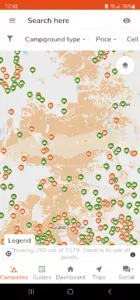
Is there an app that shows blm land? Yes, but BLM.gov does not have their own app.
Freeroam.app is the most user friendly, light weight app that not only shows dispersed sites, but also has an overlay for BLM land and National Forests.
We use it a lot! There are likely other apps available or in the making, but freeroam.app is a great solution for now.
The BLM website (if you’re patient) lists most of the recreation areas and camping sites.
Bureau of Land Management Maps
Is there a BLM land map? Yes, there are Buureau of Land Management maps found on their site.
There are even BLM interactive maps. They’re useful, but only show designated camping locations.
If you plan on dispersed camping, it can be a little more vague.
But the BLM interactive maps are great for finding other activities such as climbing, hiking, OHV, boating and biking.
If you’re already on the road and relying on a cell or StarLink signal, the interactive maps are data heavy.
That’s why we like freeroam.app. It’s light weight on the data.
Recreational Activities On BLM land
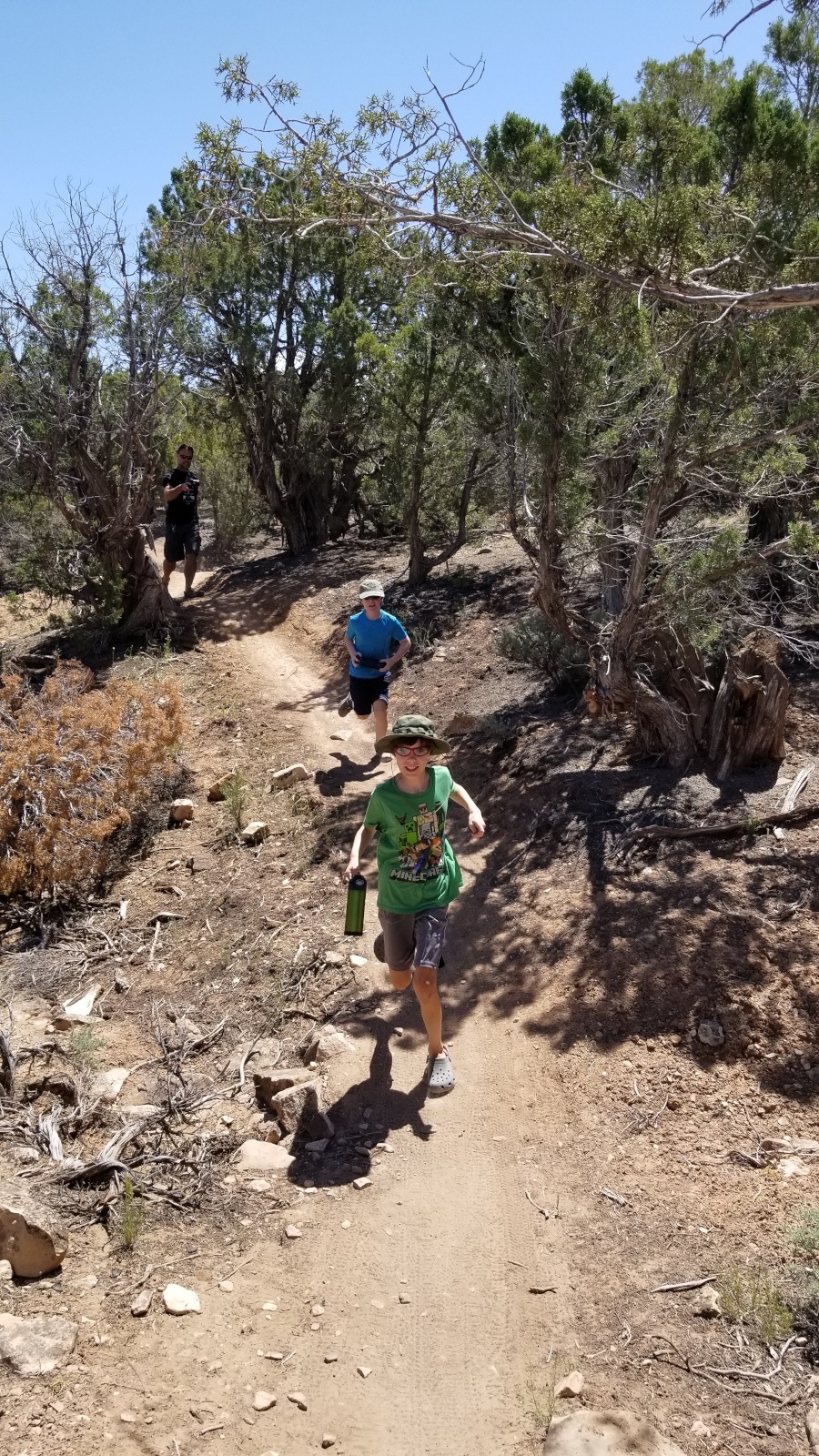
Trailhead eight by boondocking location on BLM in western CO.
I mentioned previously that recreational activities for public use on BLM land include:
- Camping:
- Hiking:
- OHV use:
- Mountain Biking/E-Biking:
- Equestrian trails:
- Climbing:
- Hunting/Fishing:
- Shooting:
- Boating:
Both dispersed boondocking and designated campgrounds are available.
There’s a ridiculous amount of trails for hiking on BLM land.
If you’re into off roading with side-by-sides, four wheelers or dirt bikes, BLM land out west has you covered!
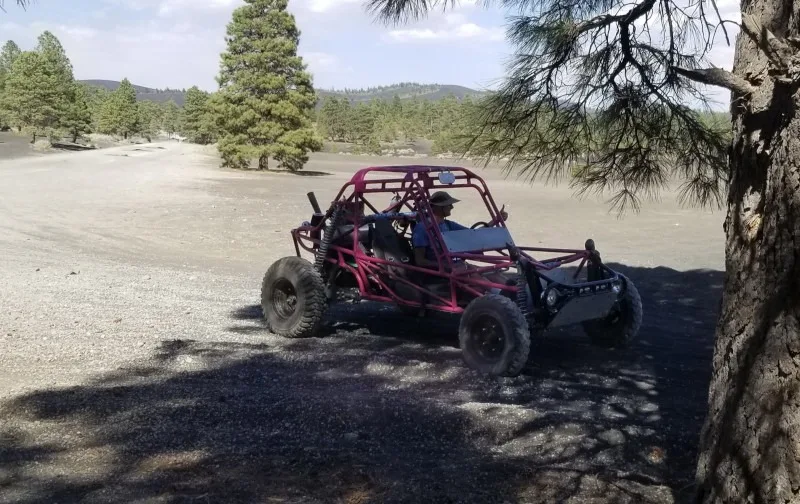
Many of the trails are also for mountain bike use. Some of which can be pretty gnarly!
Trails for horseback riding are labeled.
If t’s climbable and on BLM land, you may climb unless it interferes with historical sites.
BLM’s site states that 99% of public lands allow hunting, fishing and shooting.
Use your best judgement and know your surroundings before shooting, i.e., be responsible.
Many lakes and rivers on BLM land have launch ramps for public use. Know the applicable state laws.
If you’re an outdoor lover, then BLM land is a wonderful public resource and the perfect place to enjoy or natural resources! Please treat it with respect.
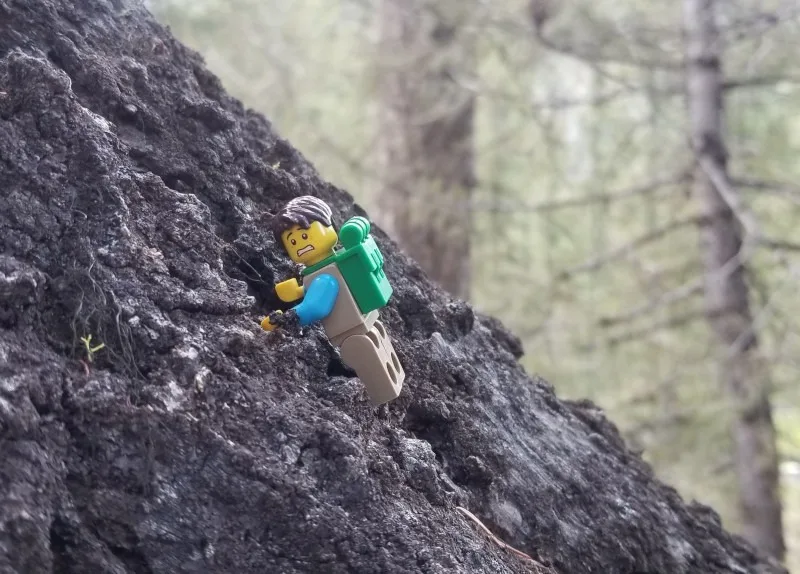
Can You Shoot On BLM Land?
Yes, you can shoot on BLM land. There are always some caveats though.
Each state has its own set of rules about shooting on public lands, so be aware.
Generally speaking:
- Shoot in a safe area.
- Shoot only at paper, cardboard or clay. No explosive targets.
- Do not shoot at vegetation or rocks.
- Please, please clean up your brass.
If there’s a fire ban, there may also be a shooting ban (for obvious reasons).
So, know the state laws and be responsible.
We like to shoot on public lands and would prefer that it remain legal.
So if you do choose to shoot, make sure you’re not near picnic areas, historic trails or within close proximity to private property.
In other words, be smart about it!
Programs For Kids On BLM Land
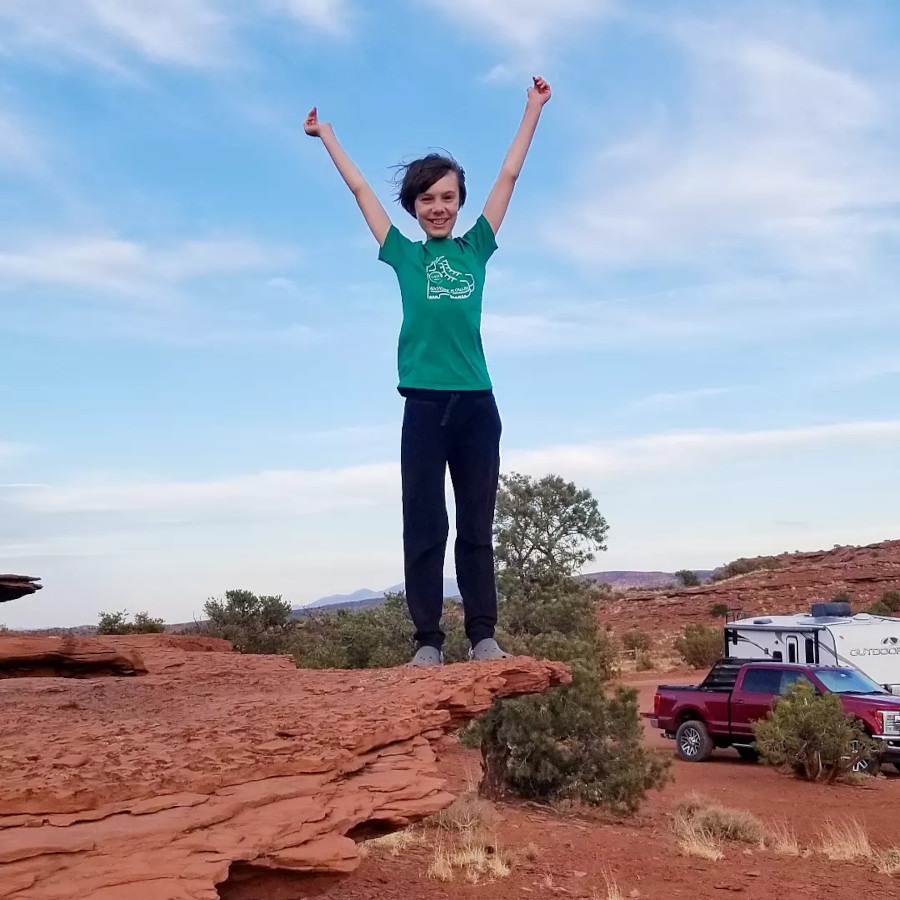
Gavyn playing outside our BLM boondocking location in Utah.
No matter what, we encourage getting your kids outside, especially on public lands.
If your child is in 4th grade, look into the Every Kid Outdoors program.
It’s a pass for the whole family and is similar to the National Parks Pass.
Such a pass is not necessary to use BLM land, but it’s a nice perk if applicable to take advantage of National Parks and National Monuments.
The Junior Ranger Program has a downloadable app kids can use to learn about the habitat around them on BLM land.
What Can I Collect On BLM Land?
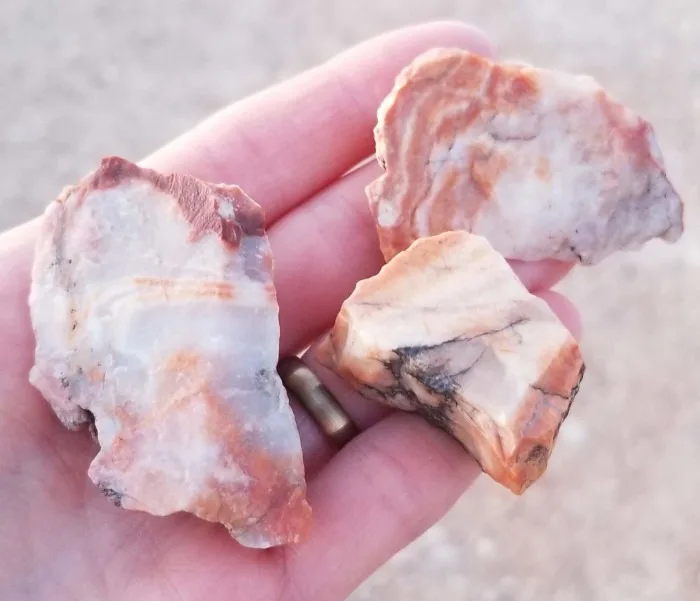
Can you keep some of the rocks or fossils on BLM land?
Yes, if it’s for casual use (not for sale), you may collect rocks, seeds, some vegetation, fungi, precious metals by hand.
Obviously, the amounts of all listed are within reason.
You may only collect small fossils ( mollusks and trilobites) on unprotected land.
Anything large should be turned over to the BLM office for proper research and display.
Bureau of Land Management History
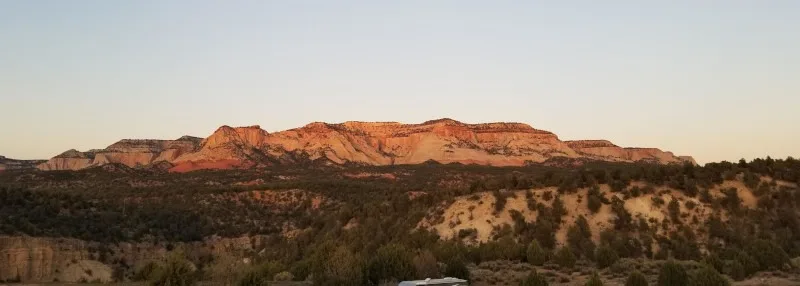
This is the “Cliff Notes” version.
The concept of the Bureau of Land Management goes all the way back to 1812 with the General Land Office’s responsibility to oversee disposition of acquired lands.
Land was initially managed for grazing, timber, mining and recreation. BLM is mandated to conserve natural, historical and cultural aspects of the public lands.
It’s also mandated that the land must have multiple uses. This is why we often boondock amongst grazing livestock.
Check out this video where we interview a cowboy about his use of BLM for his cattle.
So, how cool would it be if the government told you you could have 160 acres of land if you reside on and cultivate it for five years?!
That’s exactly what happened with the Homestead act in 1862. Seventy-two years later, over 270 million acres were privately owned via the Homestead act.
Not too shabby if you ask me!
There was still plenty of public land left. Although during WWII, more than 13 million acres were taken back for military use.
Signs of this are still apparent all over the west.
Shortly afterwards, in 1946, the Bureau of Land Management was finally formed. But it wasn’t until 1964 that the Wilderness act was enacted to protect federal lands and maintain it naturally.
A little late if you ask me.
BLM Land Management
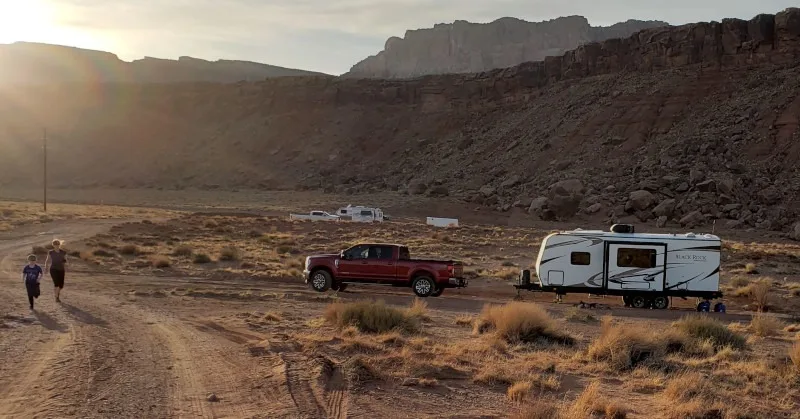
Other boondockers nearby on BLM land can be a wealth of information.
The Bureau of Land Management is the government agency tasked with preventing the disruption of the wildlife habitat by recreational users.
This is an ever growing difficulty as more and more citizens use public lands for recreation.
We see signs of abuse on a lot of highly exposed BLM land. I wish it wasn’t so, but it’s difficult to police everything.
BLM has many jobs. It is responsible for the collection of data on the health of the land.
This data is used by many organizations to assist in decisions about resource usage, public access, etc.
It’s difficult to make informed decisions without the data BLM collects.
The Bureau of Land Management is also tasked with maintaining the health and diversity of public lands, so they last for generations to come.
Interesting Facts About BLM Land
In 1867, the US purchased Alaska from Russia.
Then made the wise decision in 1971 to give back land to Alaskan natives.
This turned out to be the largest land transfer from BLM to any group ever undertaken.
Another interesting note, BLM also manages offshore (3 miles out) “land” for mineral extraction.
I had no idea.
It turns out, the Bureau of Land Management is a large organization tasked with some very important jobs!
We appreciate any help we can get to bring you great content. Donate or buy us a coffee on our Ko-Fi site.
